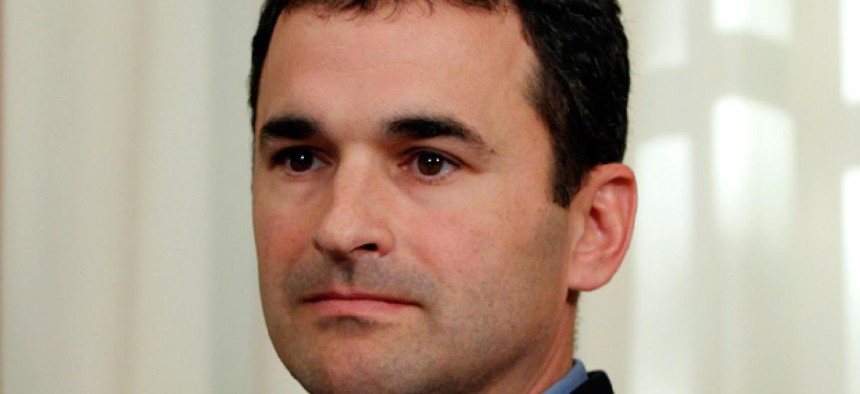
Danny Werfel, Controller, OMB Charles Dharapak/AP
Labor-management council aims for full agency participation in forums
Before the election, some managers may have been holding back, OPM chief says.
To kick-start progress on using agency forums to encourage “pre-decisional involvement” of employees, the National Council on Federal Labor-Management Relations on Wednesday voted to create a standing Problem Resolution Committee. The new panel will lend its clout to confronting the estimated 10 percent of agencies that have yet to embrace the labor-management forums called for in a 2009 executive order from President Obama.
“We have some managers who’ve been holding back, perhaps waiting for a different result in the election,” said Office of Personnel Management Director John Berry. “But that’s decided and the executive order will stand. We will take that last hill—I have a direct order from the president on it.” The new committee, he said, could help resolve stalemates with help from both labor and management representatives. “Best practices are great, but let’s acknowledge where we have problems.”
Danny Werfel, the U.S. Comptroller representing the Office or Management and Budget, said the council during Obama’s first term had “laid a foundation, but there’s a lot more we can do so let’s be bold and aggressive.” The purpose of the president’s executive order, he said, was to encourage agencies to “develop solutions jointly rather than arriving at pre-decisional solutions and then beginning collective bargaining.” In some agencies, the forums are “not established, in others, they’re not effective,” Werfel said. “A new year and new term is a good time to drill it down throughout the federal government.”
The council also agreed to reduce its previous schedule of 10 meetings yearly to one every other month, better to take advantage of staff and working group accomplishments between meetings, the proposal’s backers said. In addition, members approved creation of a standing Agenda Committee to increase member input in defining the council’s priorities. Rather than just naming a topic, said Werfel, the agenda for advancing forums to 100 percent should be “strategic and multi-dimensional,” including metrics for achieving cost saving and, asking what are the root causes, which may be different at different agencies.”
Though some from labor agreed on the need to show results in savings, William Dougan, president of the National Federation of Federal Employees, and David Holway, national president of the National Association of Government Employees, said the higher priority is to make sure the forums are up and functioning properly.
“Pre-decisional involvement has to start at the top and work down,” said J. David Cox, national president of the American Federation of Government Employees. He applauded management and labor for “taking it to heart” and working hard at it over the last 30 to 60 days, at a time of threatened furloughs, reductions in force, the fight over raising the debt ceiling and a potential government shutdown.
Two models of successful labor-management collaboration were presented to the council. The Federal Aviation Administration has been working with the National Air Traffic Controller’s Association at 20 airports nationwide to set up a modern software system called En-Route Automation Modernization. The effort’s “collaborative governance highlights that we’ve that embraced the presidential order,” said Jim Linney, deputy director of air traffic systems at FAA, who described how management sets the scope of the project but communicates with rank-and-file engineers at the varying sites to arrive at standards and uniformity in installing the software, now in place at 14 airports.
“It’s like changing a tire on a car going 70 miles an hour,” said Jim Ullmann of NACTA. “Collaboration is difficult and takes time and energy. But the workforce proves its value and doesn’t have fights in the field because that’s the point of the process.”
Also spotlighted was the U.S. Patent and Trademark Office, which has been working on performance review methods for reducing the agency’s longstanding backlog of unexamined patents. Director David Kappos described an “ongoing transformation of our agency” using continuous communication and big data to track work to employees. “It’s a big shift from a management system organized around leadership to one organized around the productive worker,” he said.
Robert Budens, president of the Patent Office Professional Association, said, “We spent a lot of time earlier sitting across a table and throwing rocks at each other, but that changed with this administration.” He noted that Kappos, on the day he was nominated by Obama in 2009, phoned Budens to set up a conversation. “He then locked us in a room until we came up with a performance appraisal system, which we hadn’t had in 40 years.” Kappos is leaving the agency soon.
The council welcomed two newcomers, Ernest DuBester, the newly appointed chair of the Federal Labor Relations Authority, and Frederick Vollrath, principal deputy assistant secretary of Defense for readiness and force management.







